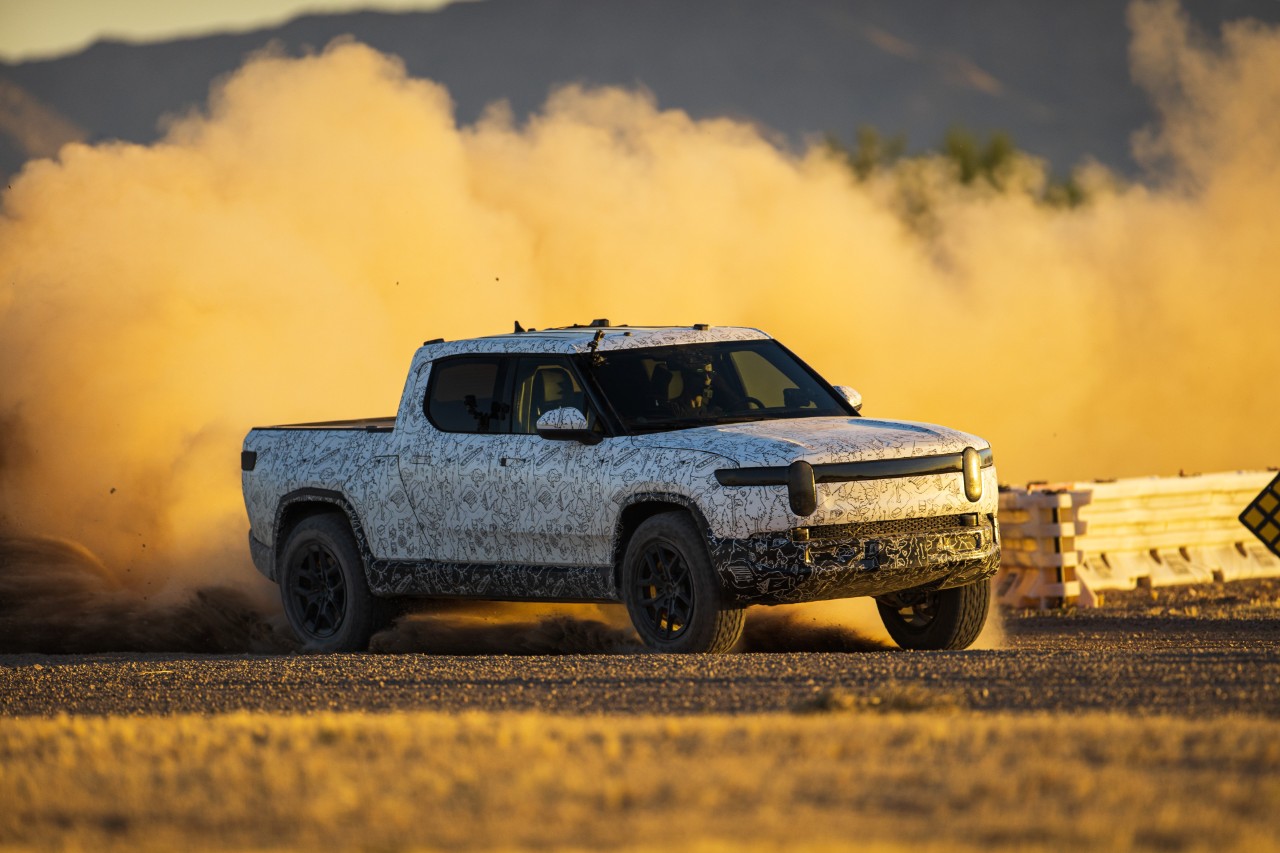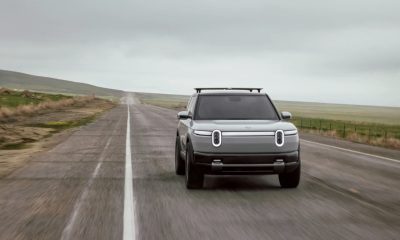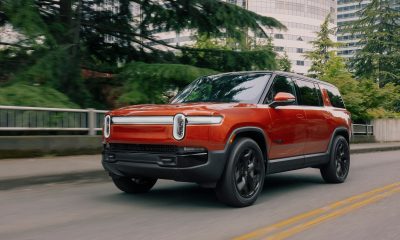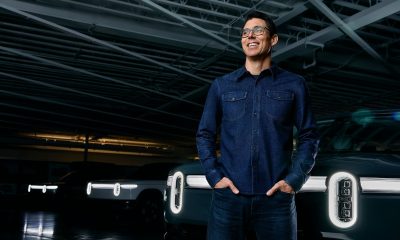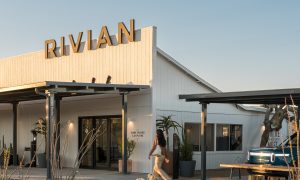Rivian has delayed the initial deliveries of its first-ever electric car, the R1T pickup truck, from July until September, an email from CEO RJ Scaringe to reservation holders says.
In an email to Rivian reservation holders from Scaringe, the CEO indicates that “cascading impacts of the pandemic have had a compounding effect greater than anyone anticipated.” Scaringe explained that the impacts had affected everything from the construction of its Normal, Illinois, facility to the widespread semiconductor shortage.
“Everything from facility construction to equipment installation, to vehicle component supply (especially semiconductors) has been impacted by the pandemic. Beyond these unforeseen challenges, launching three new vehicles while setting up a multi-vehicle manufacturing plant is a complex orchestra of coordinated and interlinked activities where small issues can translate into ramp delays.” Scaringe wrote in the email.
Additionally, the Rivian CEO indicated that R1T deliveries have been pushed back to September. R1S SUV deliveries will begin “shortly thereafter,” the email says.
“We know you can’t wait to get behind the wheel of your vehicle. Earlier this summer, we announced that deliveries would begin in July; however, the timing for the first deliveries of the R1T has shifted to September, with the R1S shortly thereafter in the fall. I wanted to be sure you heard this from me directly.”
As of now, Rivian has two operating production lines at the Illinois production plant: one for the R1T and R1S and another for the commercial vans it is producing for companies like Amazon.
“Our plant in Normal, IL has two separate production lines currently producing vehicles, one for the R1 vehicles (initially R1T and R1S) and one for our commercial vans. We have now built hundreds of vehicles as part of our validation process, with many of those spotted out in the wild covered in unique vinyl wraps,” Scaringe added. According to the email, some reservation holders have asked why these vehicles aren’t being delivered. Scaringe says that the company’s long-term success and consumer satisfaction depend on quality and robustness. These vehicles are made for testing and not for owners to have, as Rivian could still be making minor adjustments to its first vehicles.
Rivian has been working toward initial deliveries for some time. Last year, the entire operation of manufacturing the first production builds of its vehicles was delayed by the COVID-19 pandemic. With the delivery date for some reservation holders set for July, owners will have to wait a few more months for Rivian to iron out the final touches of its vehicles. The semiconductor shortage has affected many manufacturers, and it is something that comes at the worst time as Rivian is forced to push back deliveries until September at the earliest.
The full email is available below.
“Hello –
I am writing this letter from our Normal, IL manufacturing plant where our teams are working around the clock to ramp production of our R1T, R1S and commercial vans. It is amazing to see the plant come to life through the work of so many passionate team members. As I’ve watched our team grow to more than 7,000 people, I’ve also witnessed the excitement from our supporters stretch even greater. Whether you were among our first reservation holders or you’re new to the community, thank you for putting your trust in us and showing so much enthusiasm for our products. We know you can’t wait to get behind the wheel of your vehicle. Earlier this summer, we announced that deliveries would begin in July; however, the timing for the first deliveries of the R1T has shifted to September, with the R1S shortly thereafter in the fall. I wanted to be sure you heard this from me directly. There are many reasons why our production ramp is taking longer than expected. The cascading impacts of the pandemic have had a compounding effect greater than anyone anticipated. Everything from facility construction, to equipment installation, to vehicle component supply (especially semiconductors) has been impacted by the pandemic. Beyond these unforeseen challenges, launching three new vehicles while setting up a multi-vehicle manufacturing plant is a complex orchestra of coordinated and interlinked activities where small issues can translate into ramp delays. Our plant in Normal, IL has two separate production lines currently producing vehicles, one for the R1 vehicles (initially R1T and R1S) and one for our commercial vans. We have now built hundreds of vehicles as part of our validation process, with many of those spotted out in the wild covered in unique vinyl wraps. I have been asked why we aren’t delivering those vehicles or why we continue to test rather than deliver. We believe it is critical to both our long-term success and your ultimate satisfaction that the quality and robustness of our launch products truly sets the tone for what to expect from us as a brand. I have spoken with a number of you and know we need to do a better job at communicating specifics around deliveries. Our Guides will continue reaching out to schedule deliveries and will be there for any questions throughout the process. We are also preparing for a multi-city, multi-format drive program set to roll out in September. You’ll start to see Rivian charging sites and service centers being built in your local communities; and as we head into the end of the year, you’ll also start to see events, programs and spaces where we’ll be able to bring our Rivian community together. Lastly, I have spent a lot of time in the R1T and R1S in just about every conceivable environment, and I am excited for you to experience the combination of refinement, capability and performance – it will be worth the wait! You’ll be hearing more from us over the coming weeks with additional updates and progress. Thanks again for your support and being on this adventure with us.
RJ”
News
Tesla Robotaxi has already surpassed Waymo in this key metric
Tesla Robotaxi has already overtaken Waymo in Austin in one key metric, but there’s still more work to do.

Tesla Robotaxi has already surpassed Waymo in one extremely important key metric: size of service area.
Tesla just expanded its service area in Austin on Monday morning, pushing the boundaries of its Robotaxi fleet in an interesting fashion with new capabilities to the north. Yes, we know what it looks like:
🚨 Tesla’s new Robotaxi geofence is…
Finish the sentence 🥸 pic.twitter.com/3bjhMqsRm5
— TESLARATI (@Teslarati) July 14, 2025
The expansion doubled Tesla Robotaxi’s potential travel locations, which now include the University of Texas at Austin, a school with over 53,000 students.
The doubling of the service area by Tesla has already made its travel area larger than Waymo’s, which launched driverless rides in October 2024. It became available to the public in March 2025.
According to Grok, the AI agent on X, Tesla Robotaxi’s current service area spans 42 square miles, which is five square miles larger than Waymo’s service area of 37 square miles.
Tesla Robotaxi (red) vs. Waymo geofence in Austin.
Much can be said about the shape… but the Robotaxi area is now ~3.9 mi² (10 km²) larger than Waymo’s!! pic.twitter.com/dVfh2ODxJC
— Robin (@xdNiBoR) July 14, 2025
The service area is one of the most important metrics in determining how much progress a self-driving ride-hailing service is making. Safety is the priority of any company operating a ride-hailing network, especially ones that are making it a point to use autonomy to deploy it.
However, these companies are essentially racing for a larger piece of the city or cities they are in. Waymo has expanded to several different regions around the United States, including Arizona and Los Angeles.
Tesla is attempting to do the same in the coming months as it has already filed paperwork in both California and Arizona to deploy its Robotaxi fleet in states across the U.S.
As the platform continues to show more prowess and accuracy in its operation, Tesla will begin to expand to new areas, eventually aiming for a global rollout of its self-driving service.
News
Tesla Megapacks arrive for massive battery replacing coal plant
Tesla Megapacks have started arriving on-site to the Stanwell Battery Project, just as Queensland prepares to wind down the Stanwell coal plant.

The first of over 300 Tesla Megapacks have arrived to the site of a massive battery energy storage system (BESS) being built in Australia, dubbed the Stanwell Battery Project after a coal plant it’s set to replace.
In a press release last week, the Stanwell Battery Project announced that the first Tesla Megapack 2XL units had arrived to the site, which is located outside of Rockhampton in Queensland, Australia. The project will eventually feature 324 Megapack units, set to arrive in the coming months, in order to support the 300MW/1,200MWh battery project.
“The Stanwell Battery is part of the diversification of our portfolio, to include cleaner and more flexible energy solutions,” said Angie Zahra, Stanwell Central Generation General Manager. “It is just one part of the 800 MW of battery energy storage capacity we have in our pipeline.
“Capable of discharging 300 MW of energy for up to four hours (1,200 MWh), our mega battery will be one of the largest in Queensland.”

Credit: Stanwell
Did you know Tesla’s Lathrop facility churns out a Megapack every 68 minutes? That’s enough energy to power 3,600 homes for an hour per unit! ⚡️ pic.twitter.com/bG6fpHkB9O
— TESLARATI (@Teslarati) June 11, 2025
READ MORE ON TESLA MEGAPACKS: Tesla Lathrop Megafactory celebrates massive Megapack battery milestone
The state is working with government-owned company Yurika to facilitate construction, and the process is expected to create roughly 80 jobs. The project is expected to come fully online in May 2027, with initial commissioning of the Megapacks aiming for November 2025.
The Stanwell Battery is set to replace the nearby Stanwell coal generation plant, which the government is planning to wind down starting in 2026 as part of efforts to reach an 80 percent renewable energy generation ratio by 2035. Meanwhile, the government is also set to begin winding down the Tarong and Callide coal plants, while several other Megapack projects are being built or coming online. o ya
Tesla currently has two Megapack production facilities, located in Lathrop, California, in the U.S. and another that came online earlier this year in Shanghai, China. The Shanghai Megafactory shipped its first units to Australia in March, while both factories are expected to be capable of producing 10,000 Megapack units per year upon reaching volume production.
News
The Tesla Diner is basically finished—here’s what it looks like
The company first broke ground on the Diner, Drive-in, and Supercharger location in September 2023. Now, it has served one of its first internal customers.

Tesla has finally completed the construction of its highly anticipated Diner, Drive-in, and Supercharger in Los Angeles, and recent photos of the interior’s “retro-futuristic” style are making their way around the internet.
X user Brad Goldberg shared photos from the Tesla Diner site last Tuesday, depicting some of the Supercharger stalls, indoor and outdoor seating areas, multiple neon lights, and even an Optimus robot. Goldberg also noted that there had been a “flurry of activity on site” while he was snapping the photos last week, suggesting that the restaurant location could be getting close to opening.
The Tesla Diner also served one of its first internal customers in the past few days, as Elon Musk posted on X on early Monday morning that he had just finished up eating a meal at the site:
I just had dinner at the retro-futuristic Tesla diner and Supercharger.
Team did great work making it one of the coolest spots in LA!
The photos also show that the site is pretty much done, with some of them even showing vehicles charging at the charging stalls.
You can see some of the latest photos of the Tesla Diner below.

Credit: BradGoldbergMD | X

Credit: BradGoldbergMD | X

Credit: BradGoldbergMD | X

Credit: BradGoldbergMD | X

Credit: TeslaKing420 | X

Credit: TeslaKing420 | X

Credit: Brad Goldberg (via Sawyer Merritt on X)

Credit: Brad Goldberg (via Sawyer Merritt on X)

Credit: Brad Goldberg (via Sawyer Merritt on X)

Credit: Brad Goldberg (via Sawyer Merritt on X)

Credit: Brad Goldberg (via Sawyer Merritt on X)
READ MORE ON TESLA’S LA DINER: Tesla readies Drive-In Diner Supercharger for launch with app inclusion
When will the Tesla Diner open to external customers?
While it’s still not open to external customers yet, the news again suggests that the company could be close to an official opening date. Tesla first broke ground on the Diner in September 2023, after receiving a wave of building permit approvals throughout that year. Teslarati also covered much of the construction progress throughout last year, including when crews installed the first and second drive-in screens.
Located at 7001 West Santa Monica Boulevard, the idea was first discussed in 2018 by Musk and a few others on Twitter, featuring 1950s rock and roll, waiters on roller skates, and drive-in movie theater screens playing clips from some of history’s best movies. Notably, the photos of the front doors also show that the site will be open 24 hours a day, 7 days a week, whenever it does end up opening.
Tesla’s progress on Supercharger with diner, drive-in seen in aerial footage
-

 Elon Musk2 weeks ago
Elon Musk2 weeks agoTesla investors will be shocked by Jim Cramer’s latest assessment
-

 News2 days ago
News2 days agoTesla debuts hands-free Grok AI with update 2025.26: What you need to know
-

 Elon Musk4 days ago
Elon Musk4 days agoxAI launches Grok 4 with new $300/month SuperGrok Heavy subscription
-

 Elon Musk7 days ago
Elon Musk7 days agoElon Musk confirms Grok 4 launch on July 9 with livestream event
-

 News1 week ago
News1 week agoTesla Model 3 ranks as the safest new car in Europe for 2025, per Euro NCAP tests
-

 Elon Musk2 weeks ago
Elon Musk2 weeks agoxAI’s Memphis data center receives air permit despite community criticism
-

 News4 days ago
News4 days agoTesla begins Robotaxi certification push in Arizona: report
-

 Elon Musk2 weeks ago
Elon Musk2 weeks agoTesla scrambles after Musk sidekick exit, CEO takes over sales

